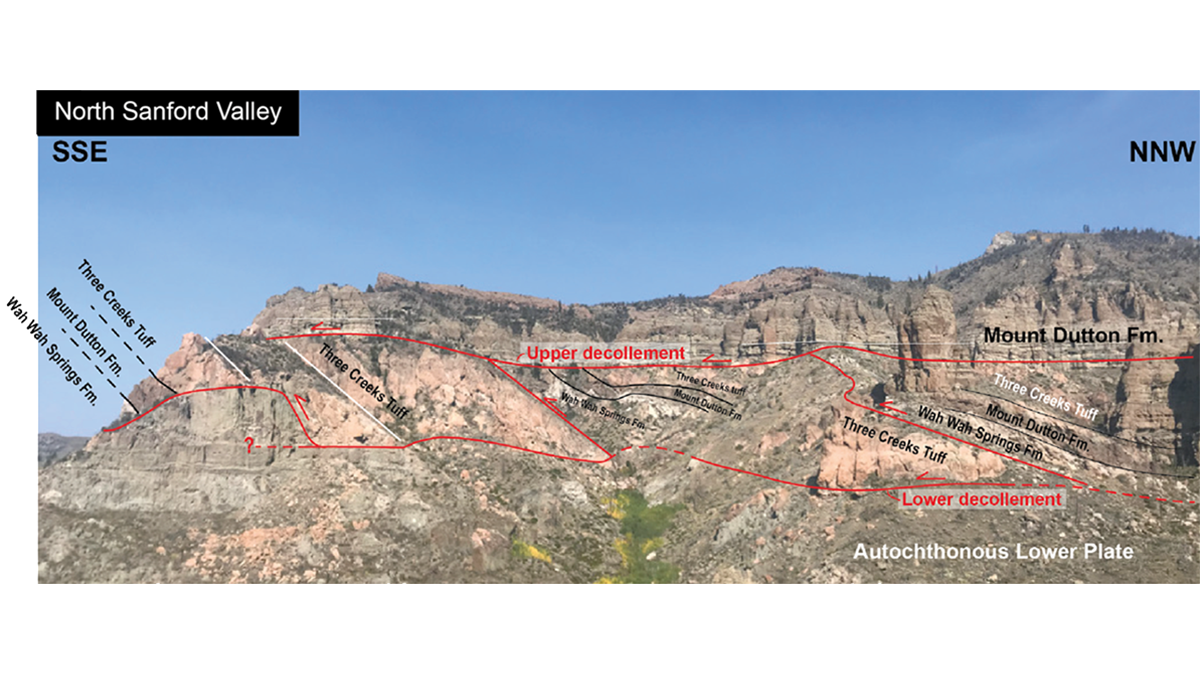Editors’ Highlights are summaries of recent papers by AGU’s journal editors.
Source: Geochemistry, Geophysics, Geosystems
Some of the world’s largest subaerial gravity slides occur on the southern flank of the Marysvale volcanic field in southwestern Utah, United States. Due to their gigantic size of several 1,000 km2, complex deformation patterns, and overprinting by Basin and Range extensional faults, these structures are easily mistaken for tectonic features and have only recently been identified as fossil gravity slides that traveled long distances over the former land surface. The long (tens of kilometers) runout distances of these gravity slides require exceedingly low friction on the slide surface, and several mechanisms have been proposed by which such low friction could develop and be maintained over large surfaces.
Braunagel et al. [2023] provide detailed and extensive observations of deformation in the basal zone of the Sevier gravity slide (southwestern Utah) to develop a model for the physical processes associated with the slide’s emplacement. The observed intense deformation in this zone supports the interpretation of rapid emplacement during a single event. Their observations further suggest that highly pressurized fluids reduced the slip resistance on the sliding plane and could aid its movement over very large areas due to the impermeable nature of the slide material. Mechanical breakdown of material in the basal zone during sliding allowed pressurized water to escape in the frontal parts of the slide, leading to deceleration and internal deformation.
Citation: Braunagel, M. J., Griffith, W. A., Biek, R. F., Hacker, D. B., Rowley, P. D., Malone, D. H., et al. (2023). Structural relationships across the Sevier gravity slide of southwest Utah and implications for catastrophic translation and emplacement processes of long runout landslides. Geochemistry, Geophysics, Geosystems, 24, e2022GC010783. https://doi.org/10.1029/2022GC010783
—Peter van der Beek, Editor, Geochemistry, Geophysics, Geosystems

